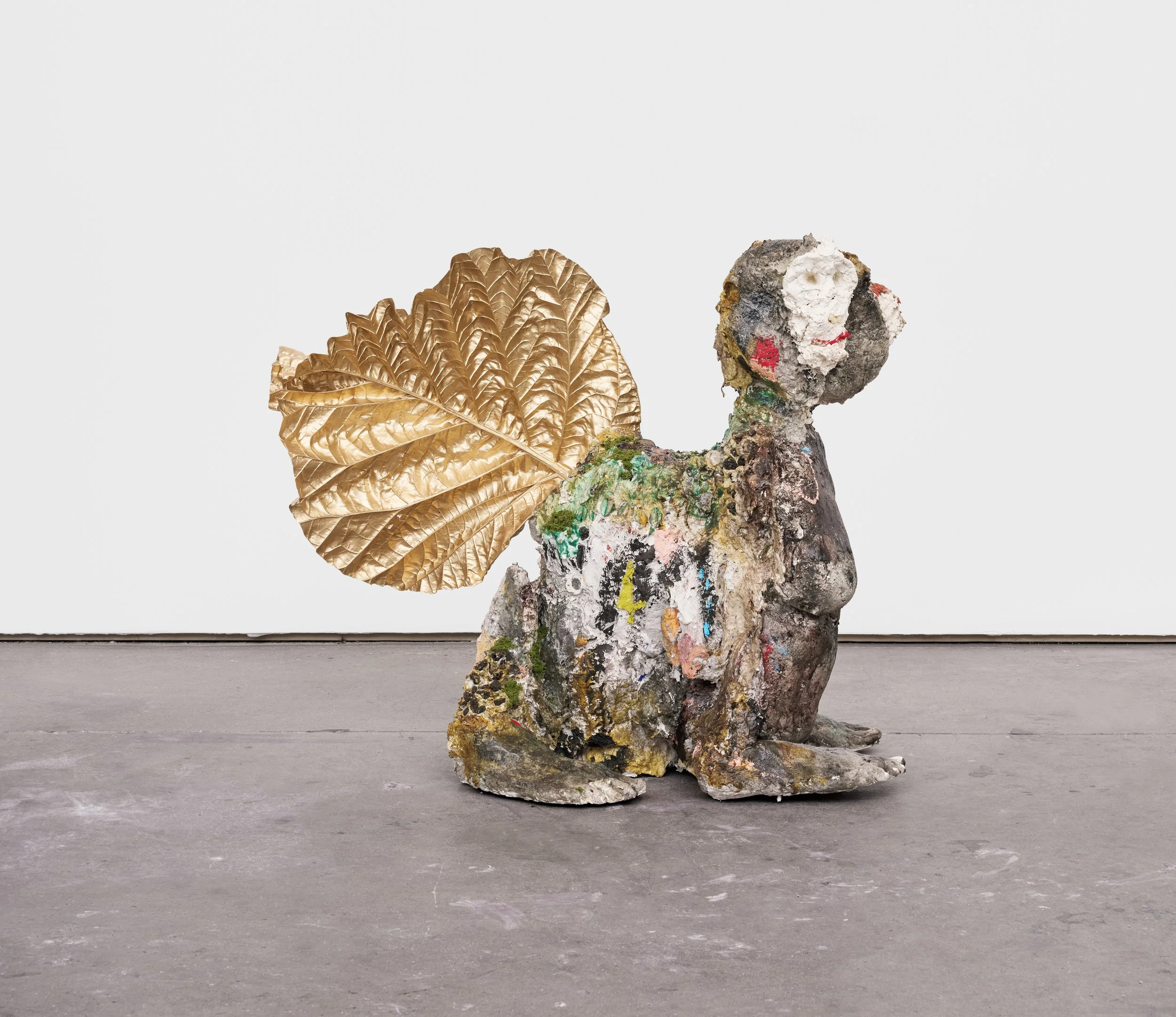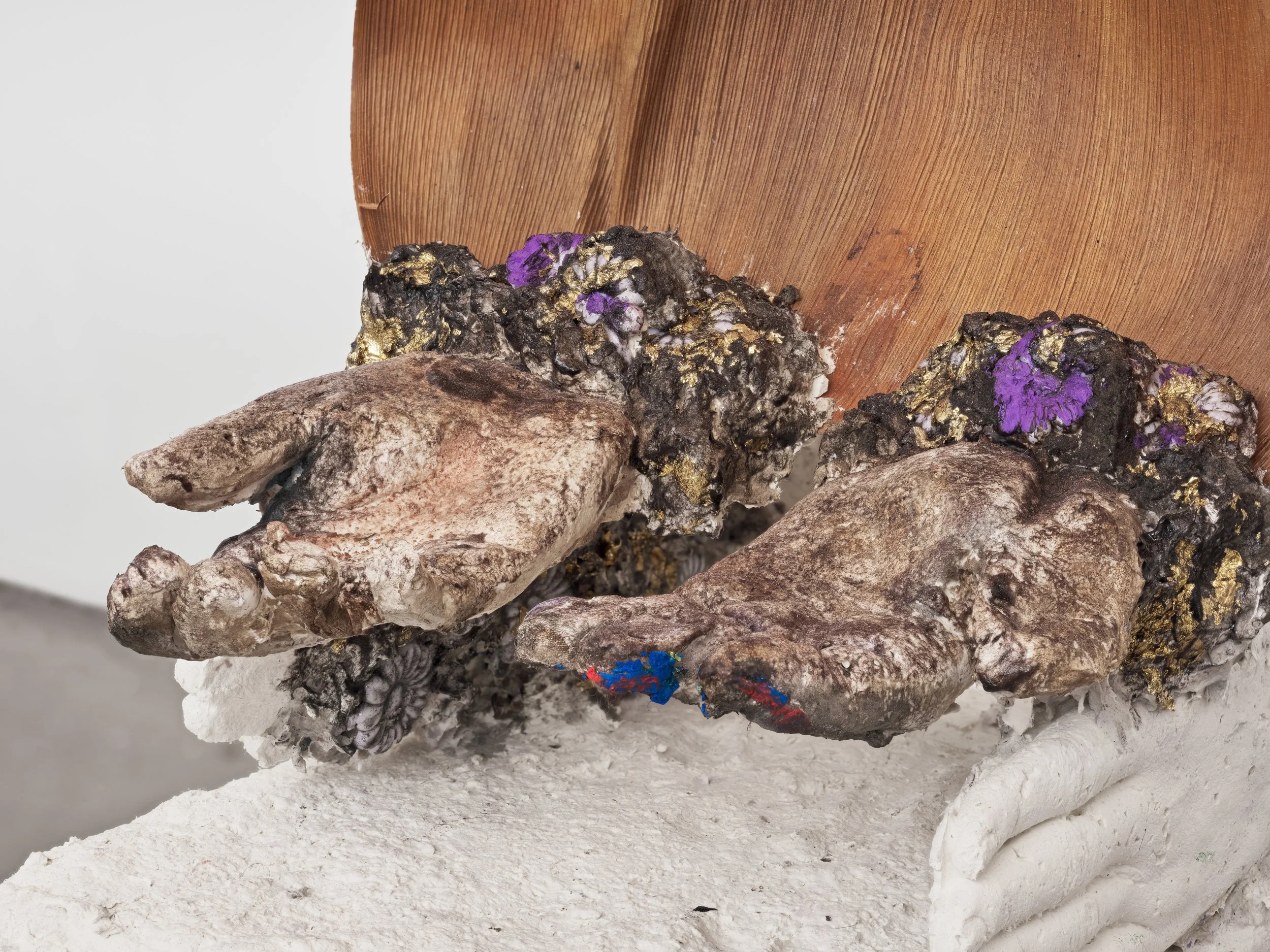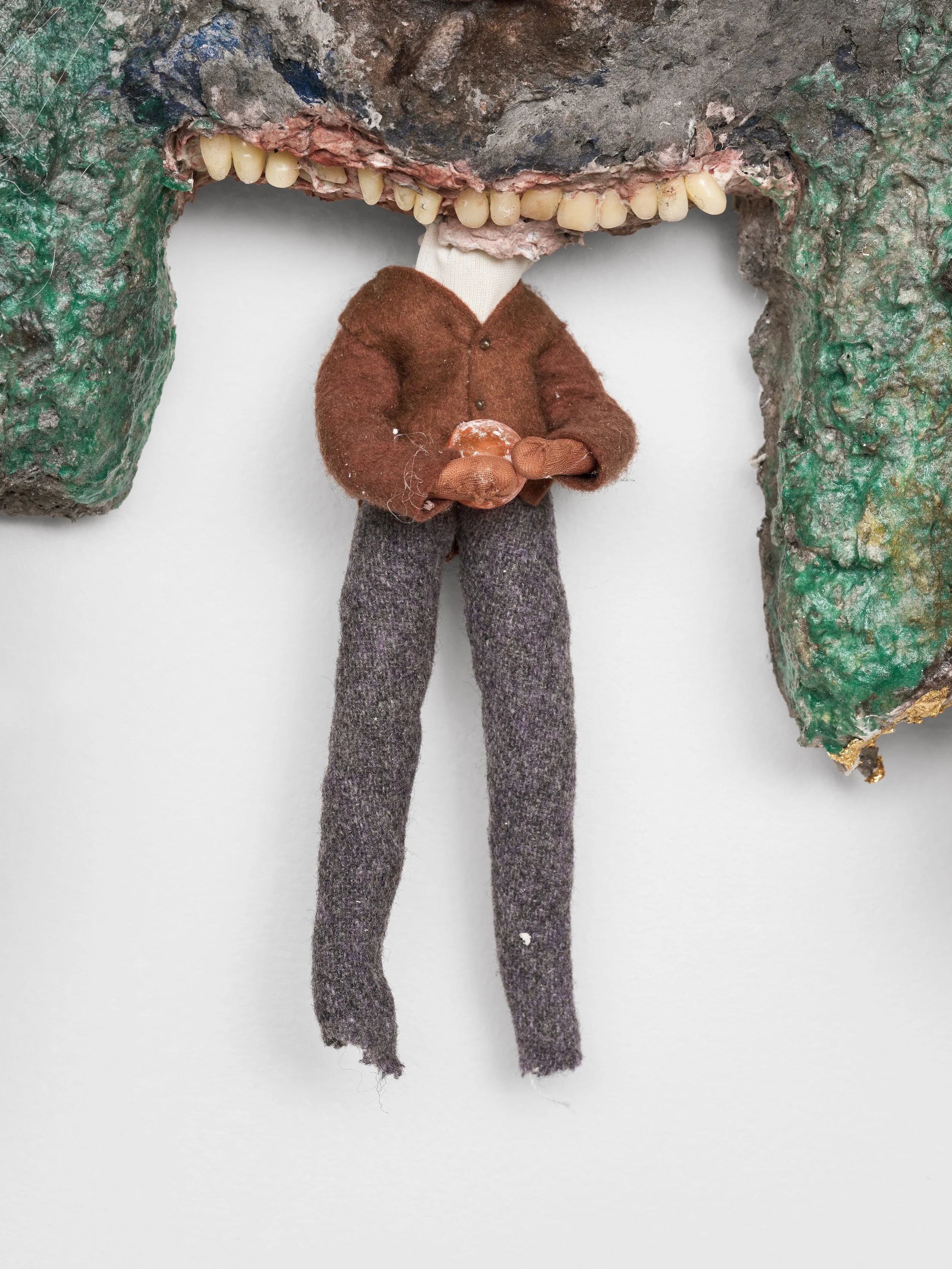Nickola Pottinger’s Totemic Anamnesis
Wells Chandler March 8. 2024
Installation view of Nickola Pottinger like yuh neva lef’ yaad at Mrs. (courtesy of Nickola Pottinger and Mrs. Maspeth, NY, photo Olympia Shannon)
The origin of duppies is found in Central African Bantu folklore. Duppies are manifold. Commonly recognizable as former earthly family members, they appear as the spirit of the deceased. Described as toothy and fused with beastial oddkin attributes, some duppies are viewed as malevolent. The hybridity of their supposed menacing presence, transcends their status to “other” category supernatural beings. Both familiar and extraterrestrial, the duppies in Nickola Pottinger’s work function as totemic protectors. In a variety of spiritual traditions, fierce guardians protect portals to access alternate dimensions. The general class of wrathful protector deities in Tibetan Buddhism, the Mahakalas, come to mind as a cross-cultural kissing cousin.
Nickola Pottinger “Duppy x Redhills” (2023) paper pulp, fiberglass, pigments, oil pastels, gold leaf, felt, tears and a hair bauble 32 x 20 x 8 inches
How duppies came to be is proposed in the Obeah lineage, the African diasporic spell casting and healing tradition. Derived mostly from West African practices and widespread in the Caribbean, in Obeah it is believed that people possess two souls. We are composed of a good soul and an earthly soul. When we die, the two souls part. The good soul ascends to heaven to be weighed. The earthly soul remains with the body in the coffin. If proper etiquette is not followed, the earthly soul escapes and has the potential to manifest as a duppy.
Nickola Pottinger “ Hellshire beach 2” (2023) paper pulp, rocks, pigments, oil pastel, gold leaf and hair baubles 26 x 26 x 16 inches
The etymology of the word duppy can be traced back to Ga. Ga is a Kwa language spoken in Ghana. In Jamaica most African folklore and culture comes from the Ashanti people who are also from Ghana and speak Kwa. The word adope, in the Ga language, translates as dwarf. Dwarves are spirits in Ghanaian folklore.
Alternatively, the origin of the word duppy is attributed to the Akan day Dapaa, signifying duppy as ancestral spirit. Dapaa is durrational, occurring nine days during the Akan month Fwodwo. In the course of this sacred time, ancestral spirits return to their homeland. This custom lives on in Jamaica. Nine days is the period of time to celebrate this tradition and is called Nine Nights.
Nickola Pottinger “Alvernia prep school” (2023) paper pulp, yagua, pigments, oil pastel, gold leaf and paper clips 59 x 13 x 17 1/2 inches
Not coincidentally, there are nine sculptures in Pottinger’s show like yuh neva lef’ yaad at Mrs. Gallery. Tenderness is rooted in the touch that constitutes these duppies, the name of the sculptural forms that populate Pottinger’s spirit world. Born in Jamaica and raised in Brooklyn, Pottinger labors in love nocturnally. Trusting the way things are felt as a way of knowing, Pottinger intuitively and carefully summons the skin of paper pulp familiars.
Nickola Pottinger “Alvernia prep school” (2023) paper pulp, yagua, pigments, oil pastel, gold leaf and paper clips 59 x 13 x 17 1/2 inches (detail)
Storytelling is a tool of agency to counter dominant narratives. Language is structural to reality and it seems to be very important to Pottinger. The Patois title of the show like yuh neva lef’ yaad, which translates to Like I Never Left Home, points to anamnesis in these shape shifting familial works. Her use of Patois language to name, supported by material specificity gestures to this germinal interest. Disembodied teeth appearing in unlikely locales further suggests storytelling. Like an oracle masticating itself into being, their unruly presence easter egged throughout pulpy vascular tissue devours, adorns and sometimes smiles back.
Nickola Pottinger “Duppy x Redhills” (2023) paper pulp, fiberglass, pigments, oil pastels, gold leaf, felt, tears and a hair bauble 32 x 20 x 8 inches (detail)
The body is used indexically. Pottinger’s hands and soles, repeatedly casted, embed these works with supplication and spirit. Channeling in the still darkness of night, remembrance and storytelling are aided by the transformation of structural language. Composed of recycled family ephemera, Pottinger metamorphosizes records that structure earthly reality, cocooning cultural and spiritual heritage in the process. There is a kind of literal re-spelling that occurs in the linguistic reconfiguration of pureed sensitive documents to reanimate through recollection.
Nickola Pottinger “Alvernia prep school” (2023) paper pulp, yagua, pigments, oil pastel, gold leaf and paper clips 59 x 13 x 17 1/2 inches (detail)
For Plato, recollecting is linked to learning. The extraterrestrial condition and original knowledge is accessed through a “going back.” This is aided through physical objects to help the soul withdraw into itself. The teeth and familial archives in Pottinger’s work talismanically aid this process through repossession and rediscovery. Since Junior High, Pottinger notably collected diagnostic casts of teeth from her mother’s dental lab. Archetypally it is through the repetition of initiation that the artist as novice discovers that they have already been a mythical ancestor located in mythical time. The retention and remembrance of this anamnestic state cyclically lives in Pottinger’s deeply personal and spiritual art.
In Being and Time, Martin Heidegger describes human existence as “being unto death.” He also states that death is, “as the shrine of Non-Being, hides with itself the presence of Being.” It is through understanding death that we take possession of ourselves and consequently open to Being. Thus Being is the act of dying. Heidegger’s proof of the paradoxical coexistence of death and life via being and nonbeing populates the charged funerary geography of Pottinger’s symbolically potent work.
Nickola Pottinger “Genkle Jesus meek and mild” (2023) wood, paper pulp, pigments, oil pastels, gold leaf and hair clips 16 x 16 x 12 inches
Nickola Pottinger: like yuh neva lef’ yaad continues at Mrs. (60-40 56th Drive Maspeth, NY 11378) through March 9.







